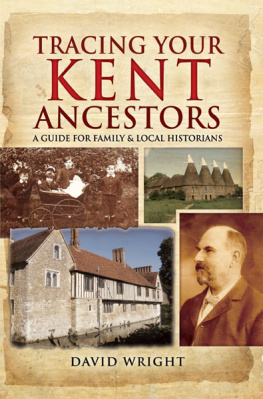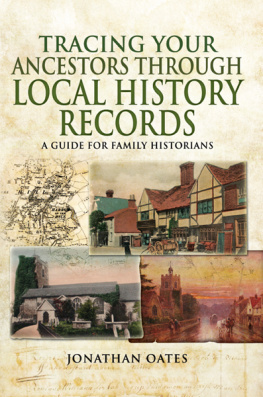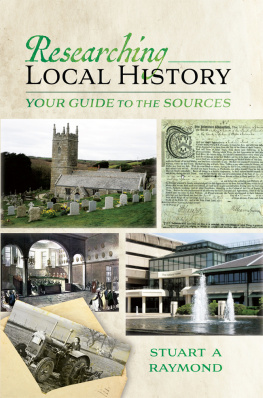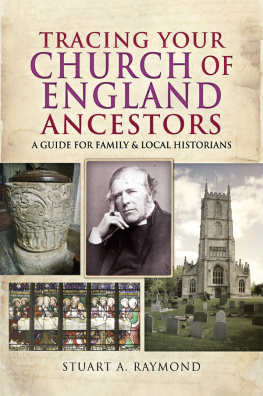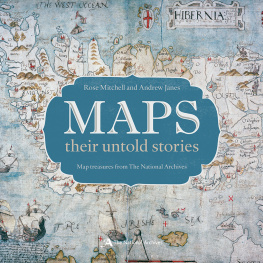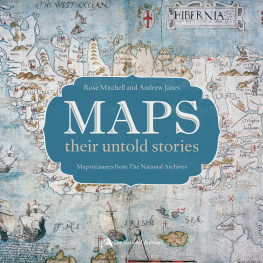Using the National Archives
The National Archives (TNA) was created on 2 April 2003, when the Public Record Office (PRO) and the Historical Manuscripts Commission (HMC) joined together to form a new organization. The National Archives is the national repository for central government records in the United Kingdom.
The main site at Kew holds the surviving records of British central government from the Domesday Book (1086) to the twentieth century. There are millions of records, which occupy more than 175 kilometres of shelving; another two to three kilometres of documents are added at the beginning of each calendar year. Records of military and naval service, legal proceedings, charters, wills, photographs and one of the worlds great accumulations of maps and plans are just a sample of the types of document which make the National Archives an invaluable resource for family and local historians.
The Family Records Centre (FRC) in central London is administered jointly by the National Archives and the General Register Office. It provides access to some of the most important sources for family history research in England and Wales, including birth, marriage and death certificates from 1837 onwards and the population census returns from 1841 to 1901.
Contact details
The National Archives
Kew
Richmond
Surrey
TW9 4DU
Website: www.nationalarchives.gov.uk
Telephone: 020 8876 3444
The Family Records Centre
1 Myddelton Street
London
EC1R 1UW
Website: www.familyrecords.gov.uk/frc
Telephone: 020 8392 5300
Enquiries and advance ordering of documents at Kew (with exact references only):
Telephone: 020 8392 5200
Fax: 020 8392 5286
Email:
Opening hours
Monday | 9 a.m. to 5 p.m. |
Tuesday | 10 a.m. to 7 p.m. |
Wednesday | 9 a.m. to 5 p.m. |
Thursday | 9 a.m. to 7 p.m. |
Friday | 9 a.m. to 5 p.m. |
Saturday | 9.30 a.m. to 5 p.m. |
The reading rooms are closed on Sundays, public holidays, and for annual stocktaking usually the first week of December.
Note that the last time for ordering original documents for same-day production is 4 p.m. on Mondays, Wednesdays and Fridays; 4.30 p.m. on Tuesdays and Thursdays; and 2.30 p.m. on Saturdays.
The National Archives at Kew
The National Archives main site is about 10 minutes walk from Kew Gardens station, which is on the London Underground District Line and the North London Line Silverlink Metro service. A number of bus routes pass nearby. The site is signposted from the South Circular Road (A205); a free car park is available. Facilities include a restaurant, a bookshop, a reference library, and a small museum.
The National Archives may seem a confusing place on your first visit, but staff are knowledgeable, friendly and happy to help. It is always best to bring with you as much relevant information as you can. If you have access to the internet, it would be worth doing some preliminary research on our website before you come: there are leaflets on many of the most popular areas of research, and a searchable online catalogue of the records, as well as much general information about our services.
You do not need to make an appointment to visit, but a readers ticket is required to gain access to the research areas and to order documents. To obtain a readers ticket, you will need to bring some means of personal identification, such as a bankers card, passport or full UK driving licence, if you are a British citizen; and a passport or national identity card, if you are not.
To protect the documents, most of which are unique, eating, drinking and smoking are not permitted in the reading rooms. No personal bags may be taken into the reading rooms: free, self-service lockers are available. You may take a laptop computer into the reading rooms as well as graphite (black lead) pencils, a notebook and up to 10 loose sheets of paper; the use of rubbers, pens (including felt-tips), and coloured pencils is not permitted. Mobile phones may not be used. All original records and reference books should be handled with great care.
Identifying and ordering documents
To view a document at the National Archives, either in its original form or on microform, you need first to identify its document reference. TNA (PRO) document references usually consist of three parts: department code, series number and piece number. When they are transferred to the National Archives, the records of a government department are normally assigned a department code reflecting their provenance: for example, records created by the Ministry of Agriculture and Fisheries commence with the department code MAF. Each category of records transferred by a department is then assigned a series number: for example, MAF 1 is the series of Ministry of Agriculture and Fisheries records which contains enclosure awards and maps made following the General Enclosure Act 1845. Each separate document (known as a piece) within a series is given its own individual piece number: for example, the reference for the piece that contains the enclosure award maps of Taunton Deane manor in Somerset is MAF 1/52. This is the full reference you need to order the document.
To place an order for an original document, you need a readers ticket, and a full document reference. Document references can be found by using the printed PRO Guide and series lists in the reading rooms or through the online catalogue (PROCAT), which can be accessed via our website or through computer terminals in the reading rooms at Kew and in the Census and Wills Reading Room at the Family Records Centre. PROCAT can be searched using keywords such as a persons name or a placename. More specific searches can be carried out by specifying dates and/or series references. Do bear in mind, however, that the catalogue was not designed to give the full details about individuals which the documents themselves may contain. So, for example, the catalogue entry for MAF 1/52 does not give the names of the owners of the lands that were enclosed: you will have to look at the actual document to discover these. If a PROCAT search is successful, document references relevant to your research will be listed on screen.
Once you have the necessary reference, original documents may be ordered via a computerized ordering system and are usually delivered within 30 minutes. Documents on microfilm can be accessed on a self-service basis.
Records held elsewhere
Many records of value for family and local history are held in other record offices and libraries. The National Register of Archives, which is maintained by the National Archives and is available on our website, contains information about the whereabouts of records in local record offices, local studies libraries and other repositories in England and Wales.
Central government records relating to Scotland are held at:
The National Archives of Scotland
HM General Register House
Edinburgh
EH1 3YY
Website: www.nas.gov.uk
Telephone: 0131 535 1334


